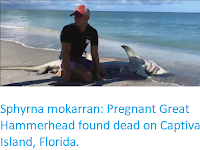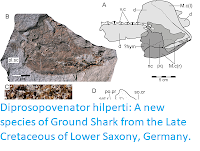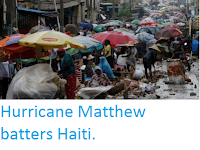Tropical Storm Isias has killed at least twelve people as it swept across the Caribbean and the Eastern Seaboard of the United States. The storm reached hurricane strength in the Caribbean, sweeping to the south of Puerto Rico, where it caused high winds and flooding, and led to three known deaths. Chiche Peguero, 53, of Río San Juan in María Trinidad Sánchez Province, who was electrocuted by a falling power line, a woman drowned after being swept into a river in Rincón Province, and a five-year-old boy who was killed by a falling tree at Altamira in Puerto Plata Province. Across the island about 448 000 people were left without electricity, and many roads were flooded. severley hampering travel and communication. The storm swept across the Dominican Republic, causing widespread flooding, and causing the death of a horse and its rider who were again hit by a falling power line. The storm reached the Bahamas on 31 July 2020, causing widespread flooding and wind-damage, before moving towards the coast of the United States.

Workers clearing debris left by Hurricane Isias in the Dominican Republic. Erika Santelices/AFP.
The passed to the east of Florida on 1 August 2020, causing some flooding and power outages, but few serious problems, however as it made landfall in North Carolina it caused more severe flooding, and triggered a series of tornadoes, one of which struck a trailer park in Bertie County, killing at least two people, with around twenty injured and three more still missing. From here it passed northward through Virginia, Maryland and Delaware, causing widespread flooding, wind damage and power-outages, with one person killed in Milford, Delaware, when her vehicle was struck by a falling tree. The storm caused further flooding in Pennsylvania, where it claimed another life as a 44-year-old woman and her car were swept away by floodwaters in Lehigh County.
Damage to boats at Southport Marina in Brunswick County, North Carolina, following the passage of Hurricane Isias. Ken Blevins/Star News.
Further north the storm caused flooding and tornadoes in New Jersey, causing damage to a number of homes and businesses, and the collapse of a church steeple in Ocean City. A 21-year-old man drowned off the coast of Cape May in New Jersey, another person was killed when a falling tree hit their car in Queens, New York, and a third death was also caused by a falling tree in New Haven County, Connecticut.
Damage to hourses in Cape May County, New Jersey, caused by Tropical Storm Isias. NCB10.
Tropical
storms are caused by solar energy heating the air above the oceans,
which causes the air to rise leading to an inrush of air. If this
happens over a large enough area the inrushing air will start to
circulate, as the rotation of the Earth causes the winds closer to the
equator to move eastwards compared to those further away (the Coriolis
Effect). This leads to tropical storms rotating clockwise in the
southern hemisphere and anticlockwise in the northern hemisphere. These
storms tend to grow in strength as they move across the ocean and lose
it as they pass over land (this is not completely true: many tropical
storms peter out without reaching land due to wider atmospheric
patterns), since the land tends to absorb solar energy while the sea
reflects it.
The path and strength of Tropical Storm Isias. Thick line indicates the past path of the storm (till 9.00 am GMT on Wednesday 5 August 2020), while the thin line indicates the predicted future path of the storm, and the dotted circles the margin of error at nine and twenty one, hours ahead. Colour indicated the severity of the storm. Tropical Storm Risk.
Despite the obvious danger of winds of this speed, which can physically
blow people, and other large objects, away as well as damaging buildings
and uprooting trees, the real danger from these storms comes from the
flooding they bring. Each drop millibar drop in air-pressure leads to an
approximate 1 cm rise in sea level, with big tropical storms capable of
causing a storm surge of several meters. This is always accompanied by
heavy rainfall, since warm air over the ocean leads to evaporation of
sea water, which is then carried with the storm. These combined often
lead to catastrophic flooding in areas hit by tropical storms.
See also...




















































